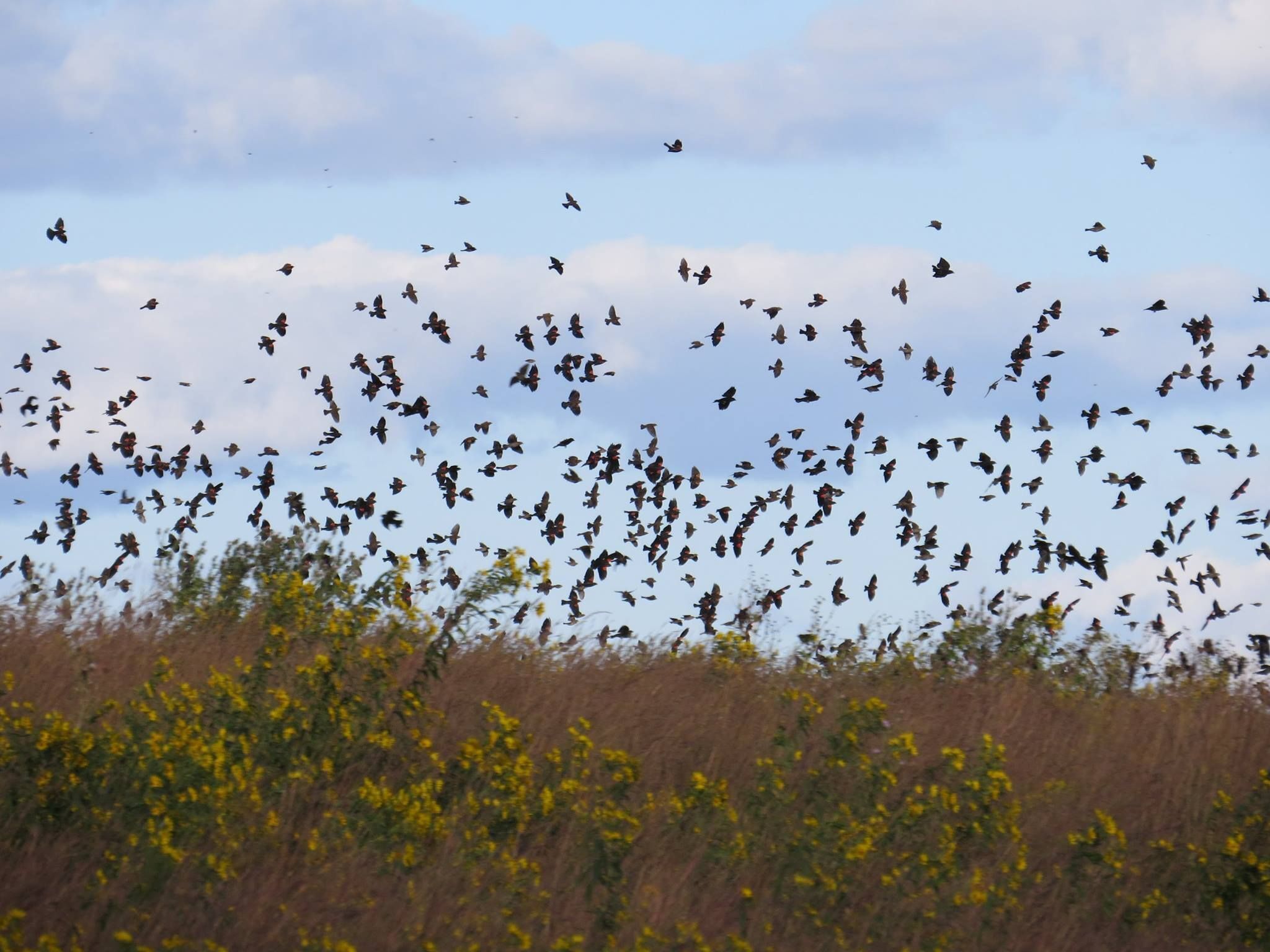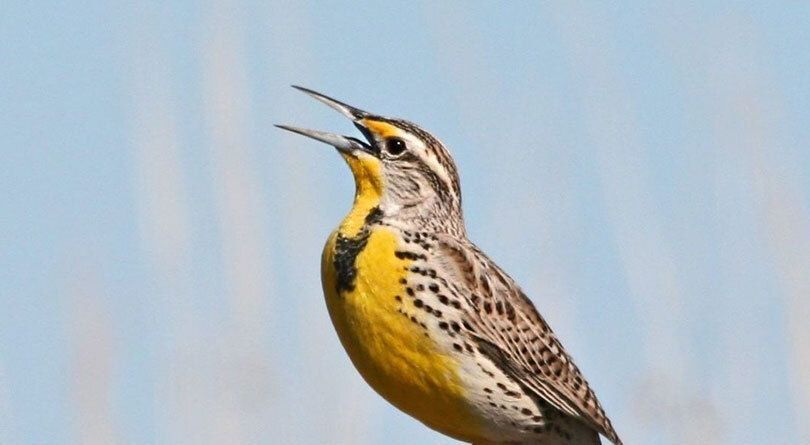
Spring migration is a spectacle. Birds full of hormones surge northward to reach the breeding grounds before their rivals. Fall migration has a different energy. Birds are often in much less of a hurry. If the weather is nice and the eating is good, they might stay for a week or two at a stopover site. Short-distance migrants such as American Robins and Eastern Bluebirds are the slowpokes of the migratory world, only moving south when conditions become unfavorable.
What this means for birders hoping to find migratory birds in the Omaha metro area in fall is that, while there’s less of a sharp peak for bird movements compared to the spring, every part of the fall has some group of birds on the move. Any day could turn up something interesting. Shorebirds are the first to get going. Those that bred high in the Arctic, such as Long-billed Dowitchers and Pectoral Sandpipers, start appearing as early as August and continue through September. After shorebirds come the long-distance songbird migrants: Nashville Warblers, Wilson’s Warblers, Swainson’s Thrushes, and more.
Around October, blackbird migration can become quite spectacular, with large mixed flocks streaming overhead or foraging among waste grain. Throughout this time, scan the skies over the Missouri River valley for a procession of raptors, especially on days with favorable winds pushing them southward.
Some nights have bigger movements of birds than others. Check out the migration forecasting service BirdCast and remember that keeping the lights out when birds are migrating helps avoid fatal window collisions.
As the days shorten and the weather chills, the familiar species of winter arrive: Dark-eyed Juncos foraging under shrubs, Northern Shovelers in the shallows of lakes, and Bald Eagles roosting along riversides. Their reassuring presence helps make it easier to say goodbye to summer. And you’ll have several months to get to know them better.
The voices of White-throated Sparrows are one sure sign of autumn’s arrival. Listen for first-year whitethroats practicing their song: “Old Sam Peabody-Peabody-Peabody” is how the syllables are supposed to sound, but the youngsters have faltering voices and sometimes get the notes mixed up. By the spring, though, they’ll have their solo down and ready to perform for summer concerts up north.
Highlights of September-October Birds
Waterbirds
• Northern Shoveler
• Gadwall
• Northern Pintail
• Green-winged Teal
• Pied-billed Grebe
Shorebirds
• Wilson’s Snipe
• Solitary Sandpiper
• Lesser Yellowlegs
• Least Sandpiper
• Pectoral Sandpiper
Seabirds
• Franklin’s Gull
• Caspian Tern
Landbirds
• Broad-winged Hawk
• Swainson’s Hawk
• Yellow-bellied Sapsucker
• Least Flycatcher
• Blue-headed Vireo
• Ruby-crowned Kinglet
• Swainson’s Thrush
• Lincoln’s Sparrow
• LeConte’s Sparrow
• Northern Waterthrush
• Nashville Warbler
• Wilson’s Warbler
• Blackburnian Warbler
• Palm Warbler
Want to know what other birders have spotted? Download the free smart phone app eBird and go to the Explore icon. There you can see which species have been spotted in the surrounding area and their location. Sign up or sign in and record your sightings, too. BirdCast is also a great website for all things migration.

